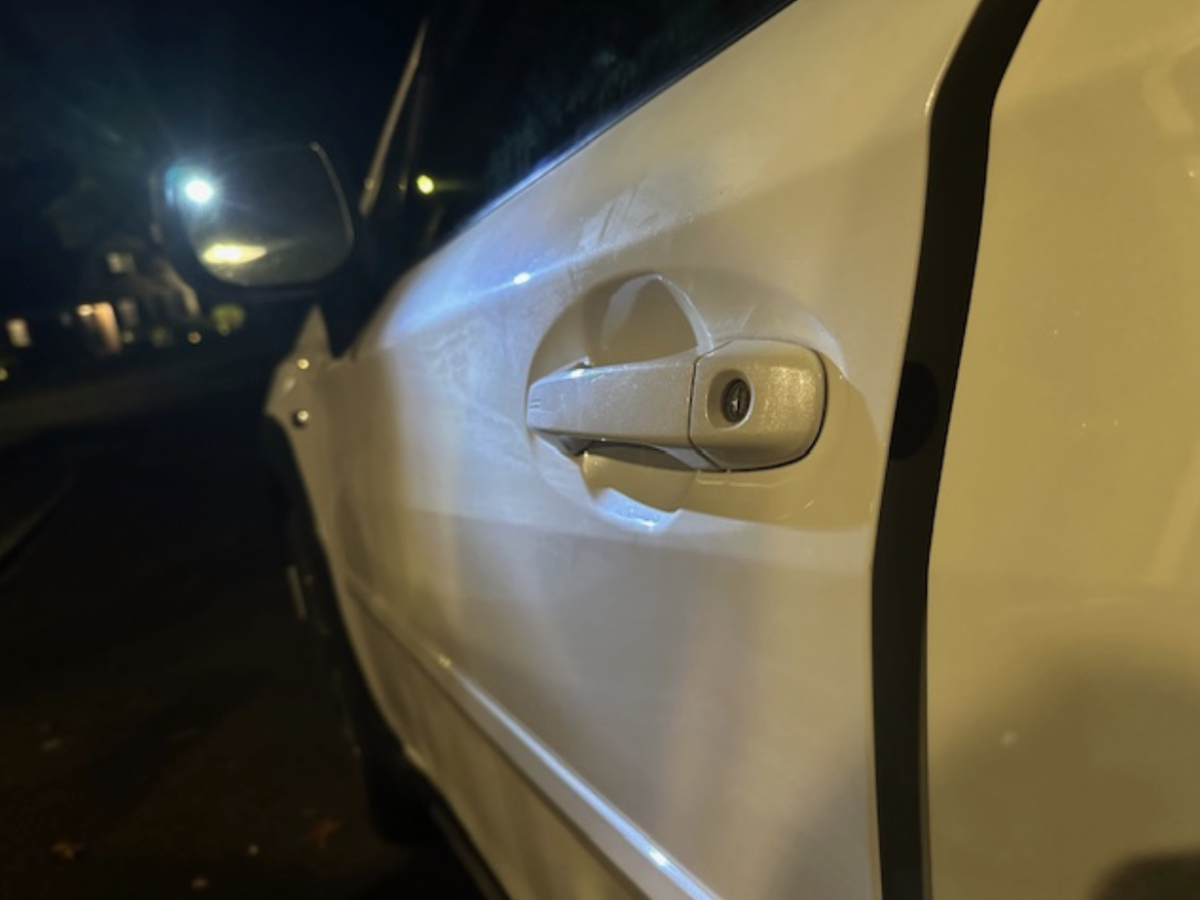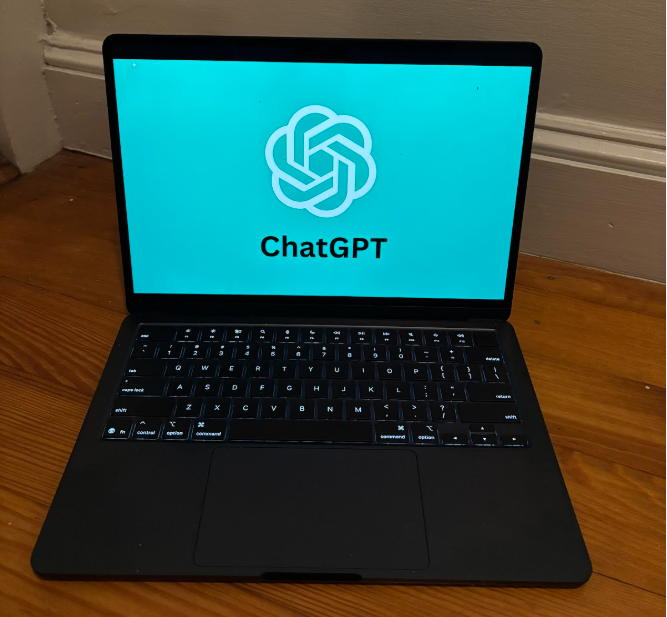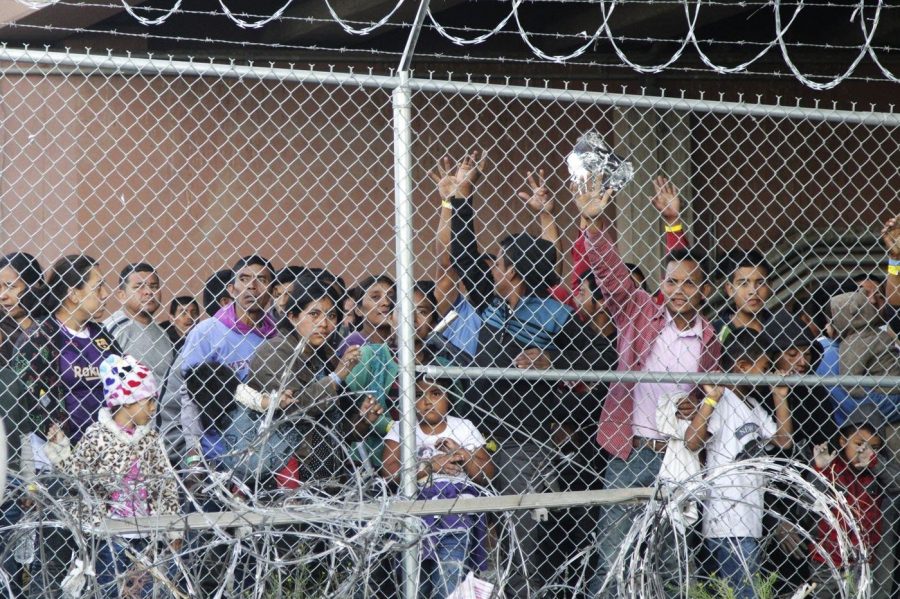President Trump’s Promise: An Update on the Border Crisis
Immigrants line up in hopes of gaining entrance to the United States at a detention center in El Paso, Texas. Photo by Cedar Attanasio (AP)
April 8, 2019
In his presidential campaign, President Donald Trump promised Americans that he would implement a stringent immigration policy. Highlighting the immigration crisis developing on the American border with Mexico, President Trump proposed the building of a wall as a solution to illegal immigration. More than two years after his election, however, his wall has yet to be built, and many are unsure if he will follow through with his promise to build this so-called “great, great wall.”
Just days after his inauguration, President Trump signed the Border Security and Immigration Enforcement Improvements executive order on January 25, 2017. This instructed the Secretary of Department Homeland Security to begin constructing a wall spanning the 2,000 mile border separating the United States from its southern neighbor. In this executive order, President Trump also demanded that Mexico fund the wall’s construction. In response to Trump’s declarations, Mexican president Enrique Pena Nieto reminded Trump that “Mexico does not believe in walls. I’ve said time again; Mexico will not pay for any wall.”
Just days later, a leaked report from the Department of Homeland Security confirmed that the wall would cost more than three times as much money as Trump predicted, totalling $21 billion. As a result, further action was delayed and politicians began to thoroughly monitor the border situation and evaluate whether or not the construction of a wall was the appropriate solution to illegal immigration on the Southern border.
While the financial realities of the wall significantly slowed the project, the topic of border security swept national headlines once again in April, 2018, when a caravan carrying hundreds of migrants from Mexico and a number of other Central American nations marched to the border. As the caravan approached, Attorney General Jeff Sessions warned that anyone entering illegally would not be tolerated at the border.
For more than a month, this migrant caravan approached the border and escalated tensions at the border. Junior Bella MacNaugton, whose father was traveling in Mexico while the caravan was approaching the border, said, “My dad noticed a ton of police security almost everywhere he went. It was extremely tense near the border.”
In order to enforce this zero-tolerance policy for undocumented immigrants, further border security measures were established within detention facilities. As the caravan approached, these facilities prepared to separate families traveling together, often admitting some children into the United States while refusing parents.
These strict security measures stepped into the national spotlight as the ethics of the measures taken at the border were put into question. Protests erupted across the country in June as the migrant caravan arrived at the border and faced these harsh security measures.
After the caravan issue that began in April died down, protests were discontinued until 7-year-old Guatemalan immigrant Jakelin Caal Maquin suddenly passed away at the New Mexico-Mexico border on December 6. President Trump released a statement claiming that the child’s father had neglected to give her water at the border, which led to her sudden death. However, a medical examination by an El Paso doctor later determined that the child’s cause of death was related to a bacterial infection the child developed while at the border. That same week, Felipe Gómez Alonzo, an 8-year-old Guatemalan immigrant, also died from a similar bacterial infection obtained at the border in El Paso, Texas.
Following the surge in protests related to actions taken at the border, Trump reinforced his strict immigration beliefs by not only threatening to completely close the Mexican-American border, but also by declaring a national emergency and a government shutdown that would ultimately aid in funding the building of the wall. This government emergency soon turned into the longest in American history before its ending at the end of January.
Though the government shutdown has come to an end, President Trump remains insistent on building a wall spanning the entire 2,000 mile border. At this time, mere segments of walls have been built across a 14-mile stretch on the San Diego-Tijuana border, as well as across smaller strips of land on the border. However, President Trump plans to continue this building process in order to follow through with his campaign promise.
Senior Lily Deneen commented, “We definitely need to learn about the current issues surrounding border crisis in school. Since it’s such a big issue in politics and affects the entire nation, we need to be learning frequent updates in order to spread awareness of this ongoing crisis.”

































